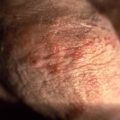What Is Occupational Overuse Syndrome?
Occupational overuse syndrome (OOS) is a type of injury common to fingers, hands, wrists, and elbows. It is caused by repetitive movements or awkward postures. OOS is also known as repetitive strain injury or RSI.
Symptoms include swelling, pain, and weakness in the affected joints. Vulnerable tendons can be overworked and inflamed by repetitious manual tasks such as working on a keyboard, working on an assembly line, or even playing a musical instrument.
What Causes Occupational Overuse Syndrome (OOS)?
Jobs that can lead to occupational overuse syndrome include office work (eg: keyboard use), manual work (eg: lifting and carrying heavy items), and process work (eg: working on an assembly line or a supermarket checkout).
Overuse injuries can also result from recreational activities that involve repetitive and/or high-intensity movements, such as practicing a musical instrument or training for a particular sport or another type of physical activity. Various other terms are commonly used to describe overuse injuries, including repetitive strain injury (RSI), gradual process injury (GPI), or cumulative trauma disorder (CTD).
Occupational overuse syndrome, and other overuse injuries (such as tennis elbow and golfer’s elbow), are caused by a repetitive task or activity causing soft tissue injury without sufficient recovery time. In other words, the rate of injury exceeds the rate of healing in the tissue.
The greater and/or the more sustained the forces involved in a repetitive activity, the greater the chance of developing an overuse injury.
Specific factors or conditions that can lead to overuse injuries developing include:
- Awkward or constricted postures
- Repetitive movement
- Prolonged muscle tension
- Forceful holding or movement
- Vibration, especially over long periods.
- Poor design or arrangement of equipment and furniture (ergonomics)
- Poor work practices eg: poor time management, poor work techniques, lack of training
- Psychosocial factors eg: excessive workload, tight deadlines, an uninspiring social and work environment.
Starting a new physical activity or intensifying a current training routine can increase the risk of an overuse injury. This is usually due to training errors (eg: too much activity too quickly) and/or technique errors (eg: poor form when doing strength training exercises or swinging a tennis racket).
How is Occupational Overuse Syndrome (OOS) treated?
Treatment aims to reduce pain and restore normal movement and function. Self-care measures and long-term strengthening are key to the treatment. Think of yourself as a ‘work athlete’. Having a well-designed exercise and recovery program helps you maintain the work fitness that your job needs.
Treatment may include physiotherapy, occupational health review, medicine, and/or exercise training. Surgery is only an option in rare cases when pain does not subside with continued self-care, strengthening exercises, physiotherapy, and medicine.
The team of healthcare providers that may be involved in your care includes a doctor, an occupational therapist, a physiotherapist, a hand therapist, or a musculoskeletal specialist. A qualified exercise trainer may be able to support you with an exercise and recovery program. Yoga, massage, mirimiri, and other complementary health practices may also help.
Self-care
Self-care measures that could help speed up recovery and ease pain include:
- taking a rest from the problem activities
- taking up a ‘recovery’ activity eg, walking, aqua jogging or swimming
- changing and correcting postures
- using a splint or elastic support
- using hot and cold packs.
Physiotherapy
Strengthening muscles is extremely important for long-term care. A physiotherapist can show you progressive exercises to strengthen your muscles. They will explore how pain influences your life and devise an individual plan with you. If your pain continues, they will also help you to work out how to move and do your required activities in different ways.
Medicine
Anti-inflammatory medications, such as ibuprofen, may be helpful for a few days. Some anti-inflammatories are available as a cream or gel that can be rubbed directly over the painful area. If you cannot take anti-inflammatory pain medication, other pain medication such as paracetamol may be helpful.
Corticosteroids may be injected around the area where the tendon attaches to the bone to help decrease swelling and pain, eg, if you have a tennis elbow or where the nerve runs through a tight space, eg, if you have carpal tunnel syndrome.
Steroid injections may help ease pain in the short term but the pain tends to come back in many people. You would need to rest the affected part of your body for a few days after such an injection, and slowly return to the progressive strengthening exercise and usual activity.
Surgery
Surgery may be considered only if severe pain continues after 6–12 months of rest and treatment or if the condition is more likely to respond to surgery, eg, carpal tunnel syndrome. Your GP can give you more information about this option.
How To Prevent Occupational Overuse Syndrome
The following tips can help prevent OOS:
- If in doubt, always breathe out
- Check your posture. Keep your hips at approximately 90 degrees
- Sit in the chair correctly – that is on your bottom bones
- A footrest may be beneficial
- Hold elbows at approximately right angles with wrists and hands in a straight position
- Keep the screen at an arm’s length away
- Your eyebrow should be approximately level with the bottom of the toolbar, at the top of your computer screen.
- Move frequently. Micropause. 1. Breathe out. 2. Rest for a few seconds. 3. Roll your shoulders backward.
- Take all lunch coffee breaks
- Learn good relaxation skills. Stress is alive and well, and those equipped with the tools to endure and embrace it will be more resilient to conditions such as OOS.
Advanced stretches:
- Chin tuck – Keeping your head straight, gently glide your head backward, literally tucking your chin in.
- Shoulder rolls backward
- Stretch finger and thumbs. Shake them often.
- Forearm stretches:
- With your elbow straight,pull your hand back towards your outer forearm.
- Placing your hands in the prayer position bring your elbows up the horizontal position.
- Elbow straight turn your hand towards your inner forearm and stretch assisted by your other arm.





